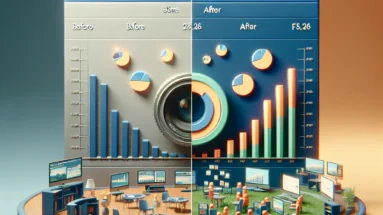
8 Tips That Will Transform How You Approach Working From Home
Create a Functional Workspace Find Your Perfect Spot Starting off, I had a hard time figuring out where to set up shop at home.

Create a Functional Workspace Find Your Perfect Spot Starting off, I had a hard time figuring out where to set up shop at home.

Understanding the Signs of Burnout Recognizing Your Limits When I first transitioned to working from home, I thought it would be a breeze. No

Establishing a Designated Workspace Create a Comfortable Environment One of the first things I learned when I started working from home is the importance of having a comfortable workspace. It’s easy to

Working from home can be a total blessing, but let’s be real—that freedom can sometimes lead us down a slippery slope of bad habits. I’ve been there, trust me. Over

Create a Dedicated Workspace Find the Right Spot One thing I've learned from working remotely is that the location of your workspace can greatly impact your productivity. I used to work from

Create a Dedicated Workspace Why a Dedicated Space is Key When I first started working from home, I didn't think much about where I

Establishing a Dedicated Workspace Choosing the Right Spot First things first, picking the right space in your home for work

Identifying Bad Habits in Your Marketing Strategy Understanding the Impact of Poor Marketing Practices First things first, let’s chat about why we even need

Understanding Your Audience Why Knowing Your Audience Matters When I first started in content creation, I underestimated the importance of understanding my audience. It’s not just about putting words on a page;

Understanding the Basics of Online Marketing What is Online Marketing? Alright, let’s start at the very beginning. Online marketing, also known as digital marketing, encompasses all the ways we can promote products

1. Understanding Your Target Audience

Establish a Clear Vision Define Your Long-Term Goals When the chaos of daily operations starts to eat away at my focus, I always remind myself to pull back and reexamine my long-term

Backlink building can feel like a daunting task, but it doesn’t have to be! In my journey through the world of SEO, I’ve learned a few tricks that can make

Enhances Brand Recognition The Power of Repetition

Define Your Brand Voice Understanding Your Audience One of the first things I had to do when I decided to ramp up my online

Understanding the Importance of A/B Testing What is A/B Testing? A/B testing, also known as split testing, is a method that can drastically improve

Understanding Your Audience Why Audience Insights Matter From my experience, one of the first hurdles in multi-channel marketing is truly grasping who your audience

Optimizing Your Headline for Maximum Impact

Identifying the Problem Areas Assessing the Original

Integrating Emotions into Ad Copy Understanding Emotional Triggers When I first started with paid ads, I noticed something crucial that many marketers seem to